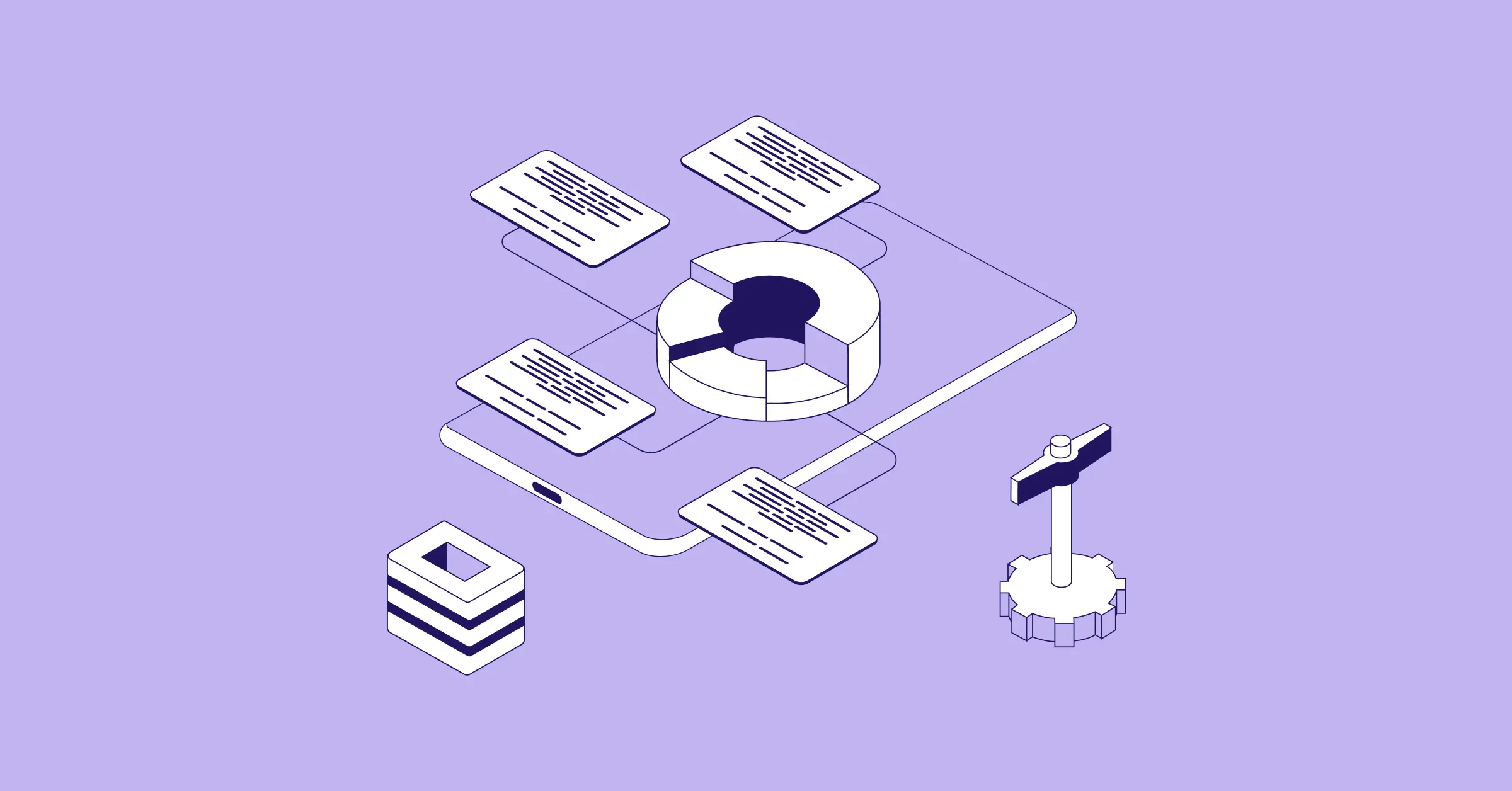September 05, 2023
Uncovering Synergies By Connecting Finance and Procurement

Sign up for our newsletter
Stay informed with the latest trends and best practices in finance and procurement.

Both finance and procurement are an essential part of any organization, and form the backbone of an effective business. Procurement drives a business forward by ensuring that it is properly resourced, while finance manages the resources of the business.
These two teams have so much value to add independently. However it’s when they’re connected that incredible synergies can be uncovered, driving an exponentially higher amount of value to a business.
Different models and the finance-procurement connection
In terms of procurement models, organizations often adopt different structures to manage their procurement functions. The chosen model also affects the relationship with the finance team of the organization.
A centralized model consolidates all procurement decisions within a single department, enhancing control and negotiation power, but removing some autonomy from departmental teams. A decentralized model disperses procurement decision-making across various business units, offering autonomy but potentially sacrificing coordination and consistency. A center-led model aims to incorporate the benefits of both approaches, with a dedicated team setting up the structure and processes for the various business units to make the best decisions for themselves and the company as a whole.
How does this impact the way procurement interfaces with the finance team?
For example, with a centralized procurement model, the finance team's coordination with a single procurement entity allows for concentrated negotiation power and centralized financial oversight, simplifying budget planning and enabling comprehensive supplier financial analysis – while not having the same level of interaction with each individual business unit, which comes with its drawbacks.
In a decentralized procurement model, the finance team might face challenges in harmonizing budget allocation and evaluating supplier financial health across various dispersed procurement entities, yet might be able to better understand and support individual business units and teams.
How procurement decisions impact financial performance and strategic objectives
With finance teams looking to manage risk, achieve strategic goals, drive efficiencies, and accurately report on the financial health of the organization, it’s easy to see why collaboration between these teams is so critical.
Cost management and efficiency
Procurement decisions directly impact the organization's cost structure and efficiency. Data-driven procurement decisions can lead to cost savings through optimal pricing, volume discounts, and reduced procurement cycle times.
Supply chain resilience and risk mitigation
By strategically assessing suppliers' financial stability, diversifying supplier sources, and cultivating strong supplier relationships, procurement mitigates potential disruptions that could adversely affect production, distribution, and overall business continuity.
Strategic alignment and value creation
Procurement teams that possess a deep understanding of the organization's goals can proactively source suppliers that offer not only competitive pricing but also value-added services, such as quality improvements or technological innovations.
Collaborative practices between procurement and finance teams
Here are some key collaborative practices that can enhance the synergy between these two functions:
- Joint Budget Planning and Allocation: Procurement and finance teams collaborate to develop budgets that align with procurement needs and financial constraints. Regular discussions and input from both teams ensure that procurement activities are adequately funded, and financial resources are allocated strategically to support procurement goals.
- Supplier Financial Assessment: Finance teams can provide valuable insights into the financial health of potential and existing suppliers. By assessing suppliers' creditworthiness and stability, finance can guide procurement decisions to mitigate supplier-related risks and ensure long-term sustainability.
- Total Cost of Ownership (TCO) Analysis: Collaboratively conducting TCO analysis allows procurement and finance to evaluate the comprehensive costs associated with a procurement decision, including not only the purchase price but also factors like maintenance, operating costs, and potential risks.
- Negotiation and Contracting Strategies: Procurement and finance collaborate to develop negotiation strategies that maximize cost savings, favorable payment terms, and incentives while minimizing financial risks. Jointly crafting contracts with clear financial terms and performance indicators ensures both parties' interests are protected.
- Data Sharing and Analytics: Sharing data and analytics between procurement and finance enables evidence-based decision-making.
- Working Capital Management: Collaboration in optimizing working capital involves finding the right balance between procurement needs, inventory levels, and payment terms.
- Supplier Relationship Management: Joint efforts in managing supplier relationships ensure that financial and performance aspects are well-balanced. Regular meetings between procurement, finance, and suppliers facilitate open communication and alignment on strategic objectives (see more tips below).
- Performance Measurement and KPIs: Defining shared key performance indicators (KPIs) and metrics enables both procurement and finance to monitor progress, track cost savings, and assess the impact of procurement decisions on financial outcomes.
- Cross-Functional Teams and Projects: Collaborative cross-functional teams that include members from both procurement and finance can be established to tackle specific projects, such as cost reduction initiatives, process improvements, or technology implementations.
A synergy that drives substantial business benefits
Benefits of an effective connection between finance and procurement include:
- Cost Efficiency and Profitability
- Streamlined operations and resource allocation
- Informed negotiation for cost savings and favorable terms
- Enhanced control and optimized spending
- Risk Mitigation and Supply Chain Resilience
- In-depth supplier financial assessments
- Effective supplier diversification
- Minimized disruptions and improved business continuity
- Strategic Decision-Making
- Total cost of ownership analysis for long-term value
- Agile adaptation to market changes and opportunities
- Financial Performance
- Prudent working capital management
- Efficient resource allocation and reduced financial waste
- Innovation and Market Differentiation
- Capitalizing on new market trends and demands
- Support for product development and differentiation
- Operational Agility
- Swift response to market shifts and customer needs
- Efficient utilization of resources for maximum impact
- Long-Term Strategic Alignment
- Aligned procurement strategies with broader vision
- Enhanced competitive positioning and sustainability
- Regular Cross-Functional Meetings: Schedule regular meetings between finance and procurement teams to facilitate open communication, share insights, and align on strategic objectives, promoting collaboration and synergy.
- Shared Performance Metrics: Establish common key performance indicators (KPIs) that measure the impact of procurement decisions on financial outcomes.
- Joint Workshops and Training: Organize workshops or training sessions where members from both departments can enhance their understanding of each other's functions, processes, and challenges, fostering empathy and cooperation.
- Cross-Functional Project Teams: Create cross-functional teams comprising members from both departments to work on specific projects, such as cost reduction initiatives or supplier relationship management, promoting collaboration and joint problem-solving.
- Integrate the right technology: Aligning finance and procurement often comes down to a shared technological platform or view. By sharing a source of truth, finance and procurement will naturally be drawn to one another and are likely to work together to boost efficiencies and value creation.
How PayEm effectively connects finance and procurement
PayEm connects finance and procurement teams to drive business growth. It unites these teams with one platform, offering compliance, control, efficiency, savings, and accountability.
From real-time data and insights that are available to all stakeholders, to customized and automated approval flows, PayEm brings the transparency and collaboration that enable modern organizations to flourish.
In summary, when effectively leveraging finance and procurement, the gains can be orders of magnitude greater than the effort you need to put in. And if you incorporate the PayEm platform into your finance and procurement stack, you’re already perfectly placed to take advantage of these synergies and unlock value for your organization.


